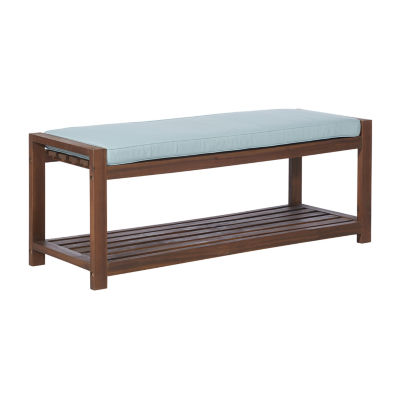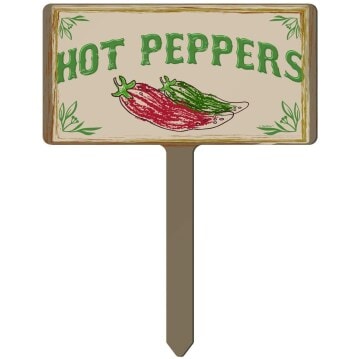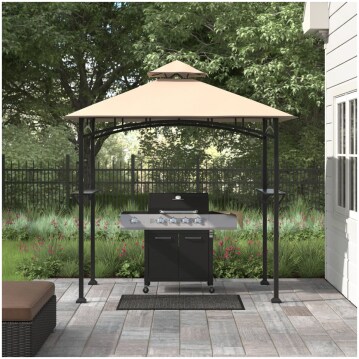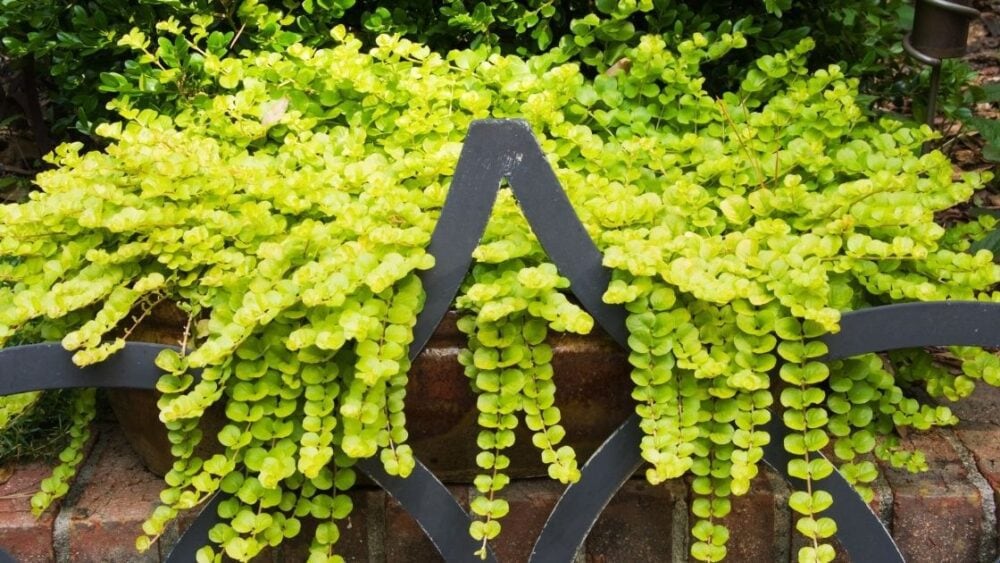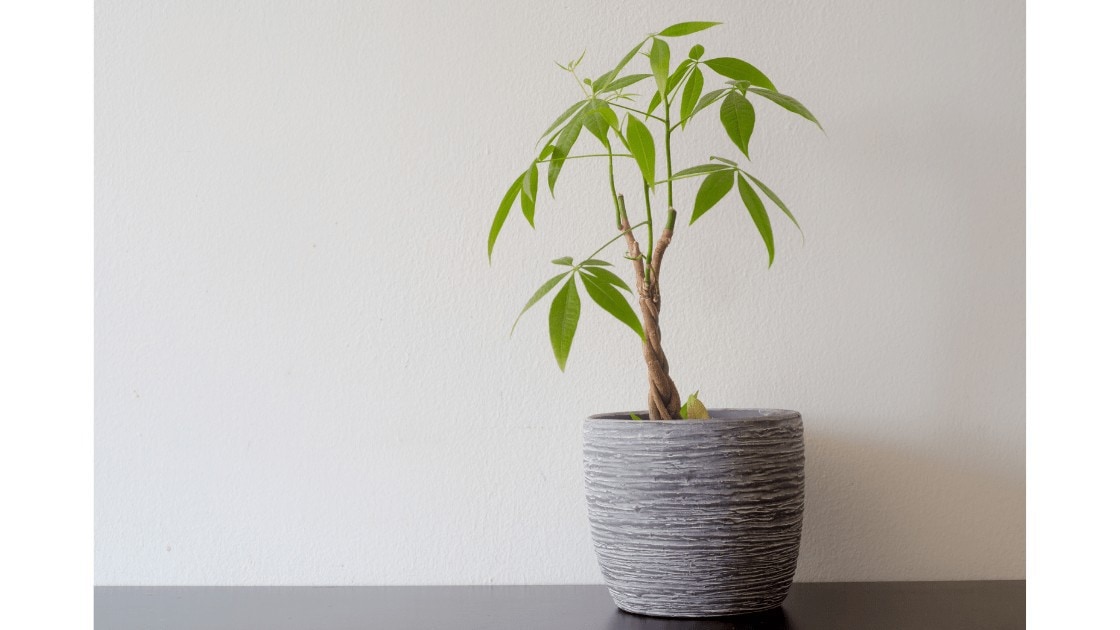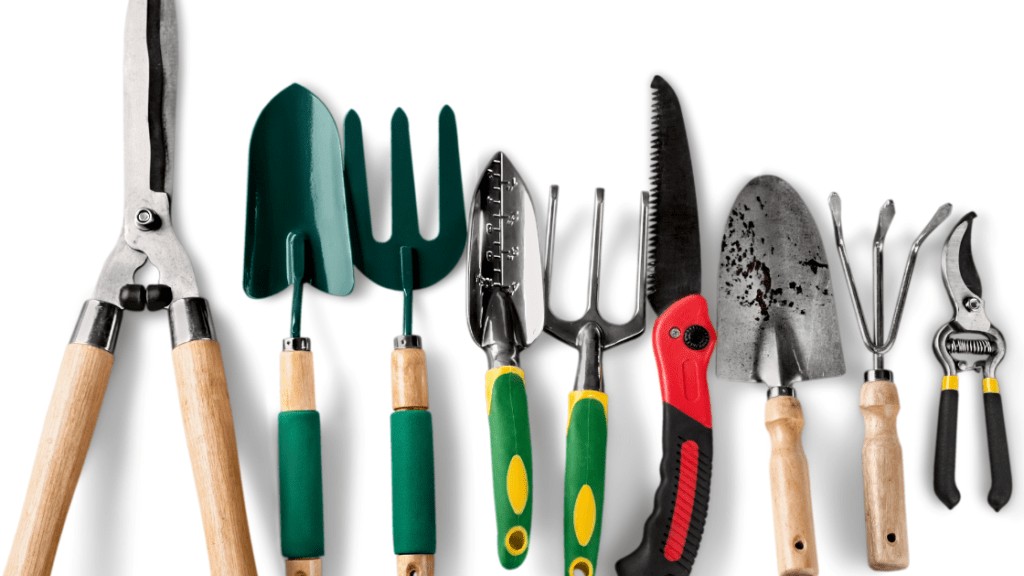
If you are a beginner gardener, there are many things that you need to learn. And one of them is that you need tools to make your gardening easy. However, as a beginner, you don’t need to pick up every type of tool you see.
There are many kinds of gardening tools that can help make your job easier, but very few of these are necessary. What you should keep in mind is it would probably be more beneficial for you, if you spend a little more and buy high-quality tools so that they will last you longer because the durability is better. Here are some of the essential tools you need as you start your gardening project.
Gloves

Gloves are very useful in protecting your hands, wrists, and arms from being scratched, from getting callouses, and from getting dirty. If you handle thorny weeds or dig deep roots, gloves will give you the extra protection that your hands and fingers need.
Browse our Affiliate Products
A good pair of gloves should be durable but not bulky. If your gloves are too bulky, then it could hinder you from feeling what you are doing. There are gardening tasks that need a certain amount of gentleness like planting seeds or transplanting seedlings. If you have well fitted gloves you will be able to pick up tiny objects. If your gloves are durable, then they can withstand stress and protect your hands while making them move easily.
Water resistant gloves are perfect for gardening conditions that are wet, damp, or during winter times. Even when you are digging in wet soil, or pulling weeds after the rain, water-resistant gloves will keep your hands dry.
Gloves with long cuffs are great at protecting your wrists and arms from getting scratched by thorns and brambles. It can also help prevent soil from getting inside your gloves.
Cotton gloves are also good, but you will need to rinse them after use to remove soil and dirt. Leave them on your hands while rinsing. Wash them with soap and water just like you would normally wash your hands. Then air-dry your gloves.
Leather gloves are a little pricier, but they will last longer.
While it may a be a dirty job cleaning up one’s yard and garden space, there are many benefits in doing so. For more information on this check out this article. What Can Possibly Happen if you don’t Cut Your Grass?
For more of a comprehensive list of beginner garden tools, check out this article: Flourishing Garden: 60 Tools Every Beginner’s Gardener Needs
How to Maintain Your Gloves
To maintain them you will need use a soft-bristled cleaning brush to brush away dirt, saddle soap to wash them and then gently rinse them, lay them out flat to dry. After they have dried treat them with linseed oil.
Pruning Shears
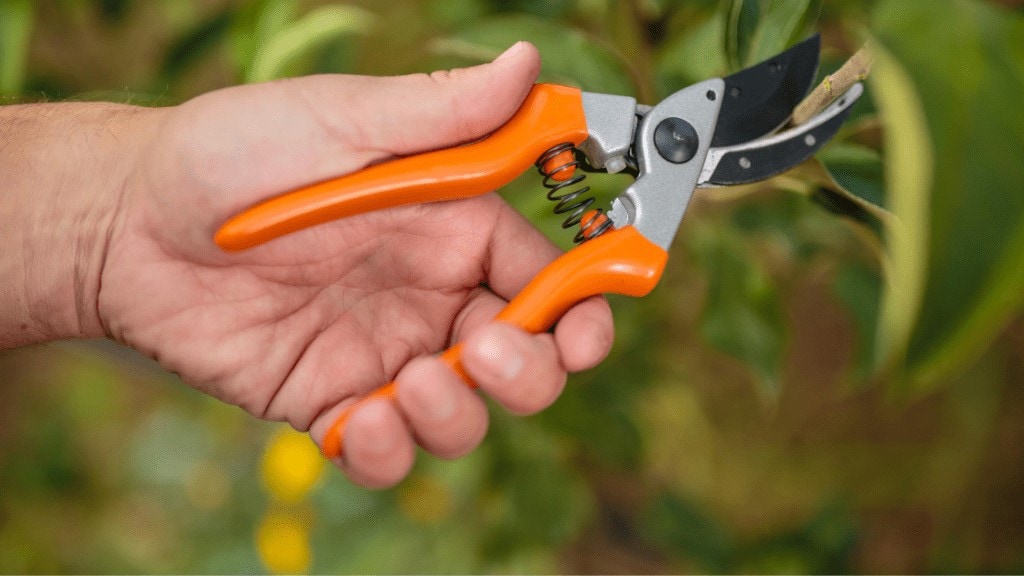
Hand pruners, also called secateurs, help in preventing plants to get out of control. You can use them to prune or harvest delicate plants and cut or trim light branches. You can also use your pruner to remove dead branches and cut flowers properly.
Anvil pruners have one sharp blade and a flat surface. It is like having a knife on a board. You can cut deadwood with this type of pruner. However, don’t use it on fresh green stems and branches because they will surely be crushed. These pruners are also good for cutting thick branches.
Bypass pruners acts like scissors. It has a stainless-steel curved blade that is designed to hold the branch while the cutting blade comes down. It has a clean cut and slices all the way through the stem.
Ratcheting pruners have greater cutting strength. It is good for gardeners with arthritis or reduced hand strength. Because of its strength, it is ideal for cutting thicker and harder branches. With its design, the strain on your wrists is reduced. It requires less pressure to close and to operate.
For more information on pruning shears, check out this article. 2 Reasons Why Pruning Shears Are Curved And Why They Work
How to Maintain Your Pruning Shears
To maintain your pruning shears, you need to wipe down the blades with a cotton face pad soaked in hydrogen peroxide or alcohol after use. Buff the blades with a little bit of vegetable oil to lubricate it and prevent rust.
You also need to give your pruners a deep clean each season. You can do this by unscrewing the nut that holds the tool together, taking the pieces apart. With warm soapy water, wash each part then rub them with alcohol or hydrogen peroxide. Dry all parts then reassemble the pruner.
Garden Fork
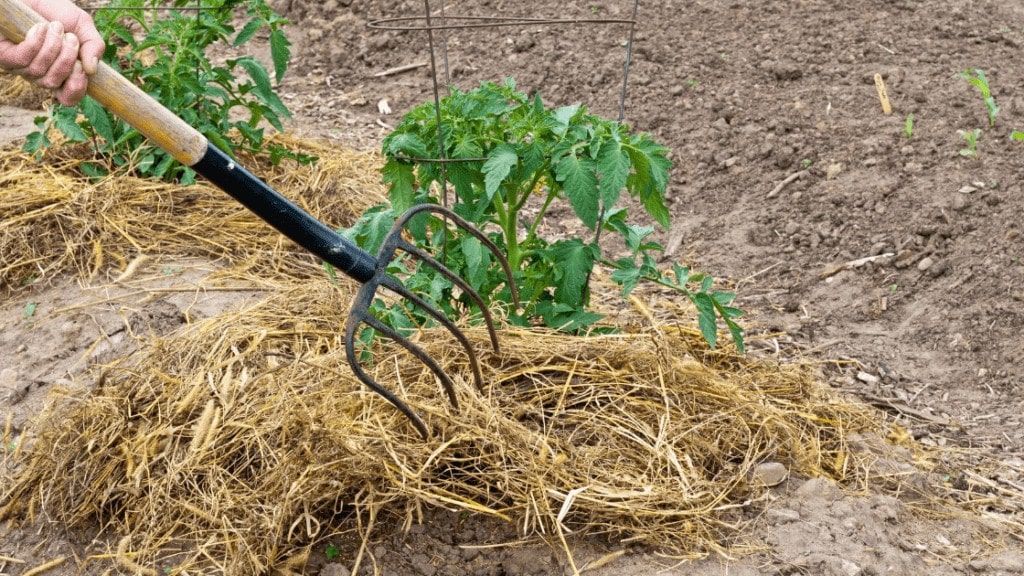
A garden fork is a gardening tool that has short, sturdy tines. You can use a garden fork for loosening, lifting, and turning over soil. You can also use it to dig into dense soil better than a spade.
Straight tines garden forks are digging forks. They have flat tines with no curves. They can dig in compacted, rocky, or clay soil. They can dig up plants with tough, massive root structures. Their tines can cause less damage to root structures and so get out more roots than you can with a spade.
Square tines garden forks are stronger than flat tines which can bend when they hit a rock or a root. Square tines made of stainless steel can resist rusting. If you have undisturbed, clay, or tough, hard soil, then this is the fork that you need. It can break up the toughest soil and can dig up root crops.
How to Maintain Your Garden Fork
You can wipe your tool dry with a clean rag.
Loppers
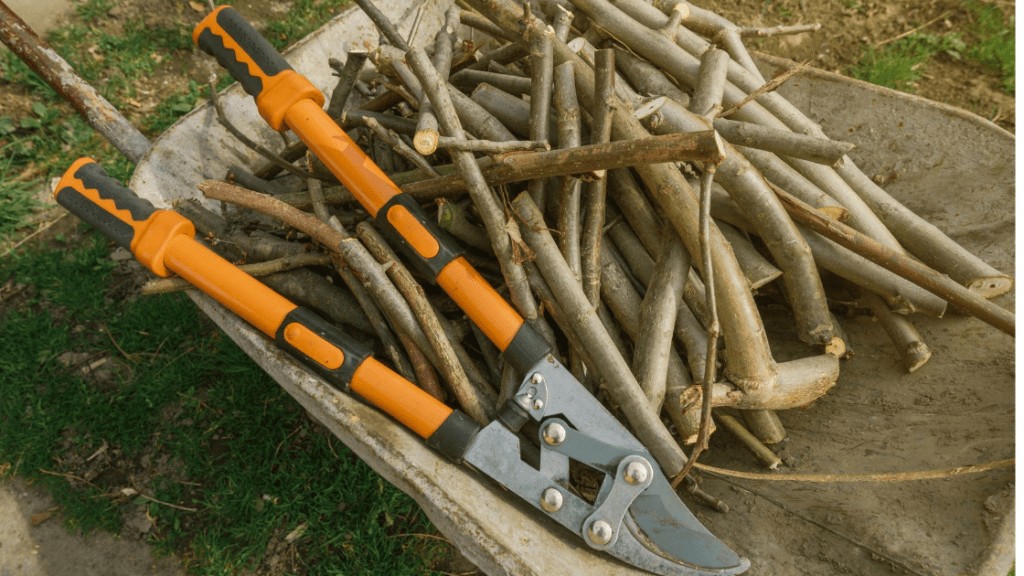
Loppers are garden tools also used for cutting but they are used to trim hard to reach areas and cut thicker branches. Loppers are long-handled pruners. With the long handles, leverage is provided to cut through branches with thicker diameters.
Bypass loppers are the most used loppers. They provide a clean cut on live wood. This allows the plant to heal quickly. However, they are not good at cutting dead or dry branches. They tend to get jammed and the blades can bend.
Long-handled loppers come with a range of handle lengths from 15 inches to 32 inches or longer. Long-handled loppers have more leverage. This makes cutting thicker branches easier. Keep in mind long-handled loppers are heavy.
Lightweight aluminum or carbon composite lopper handles are extremely light in weight. If you plan to do extensive overhead pruning, you need these lightweight tools. They have rubber shock absorbers that provide exceptional comfort. Their lightweight is due to their being hollow. You can easily carry them, but they bend under pressure.
In addition, if you love gardening work and want to more, click on this article. Is Gardening Worth All The Effort?
Maintenance of Loppers
You need to maintain the correct bolt adjustment if you want your pruning loppers to perform their best. Adjust the tightness of the center bolt and bolt the blades to the handle. To get the best performance from your pruning loppers, keep them well lubricated. This will help the parts last longer and you will find that it is much easier for you to prune.
Hand Trowel

A hand trowel is a gardening tool that is used for transplanting bedding plants and herbs, planting containers, and taking out weeds. You can yank out unwanted plants, roots, and all with these. You can also use it to dig holes for new plants.
Broad blade hand trowel is good when you need to dig large holes. It can also carry more soil, break up hard soil, and is useful for planting flowers. If your hand trowel has long, narrow blades, you can dig up weeds or rocky soil. You can also use it for transplanting work that requires precision cutting and digging. You can use the narrow blade in tight spaces like narrow flower beds to plant seeds and bulbs.
The handle of the trowel should fit comfortably in your hand. Some trowels are made with a comfort grip. These are made from finely tempered steel and riveted to cast aluminum mounting. You should consider buying a fully hardened, tempered, and polished stainless-steel head hand trowel because it is more durable and last longer.
Maintaining Your Hand Trowel
To maintain your trowel, you need to clean it with a bucket of water, an old rag, a wire brush, and oil. Dunk the trowel into the bucket of water to loosen dirt. Then wipe it with a rag. Scrape off remaining dirt with a wire brush. To protect it from rust, oil it. If the handle is made of wood, coat it with oil to preserve and waterproof it.
Every couple of years, sharpen the blade of your trowel. Use a hand file for it. With this, you help the blade cut through tough soil and roots. Store your trowel in a dry place so moisture doesn’t get into it and lead to rust.
Spade

A spade is a short-handled square shovel. With a spade, you can dig holes for plants. It can also be used for edging, lifting sod, and moving small mounds of dirt from one area to another.
The most common spade has treads. This means that it has rests for the feet to drive the spade into the ground. The tread is found on top of the blade. It gives the spade a sturdier and more comfortable foot surface when it needs an extra push.
Ash hardwood spade handles are very durable. They also absorb shock and vibration. This type of hardwood handle is strong, stable, and resistant to rot and damage from exposure to the elements. If you maintain it properly, your ash hardwood handles can last a long time. You can easily replace them if they are worn or damaged. They can also be repaired with wood glue if there is minor damage.
There is more leverage with a spade with a longer handle. However, they are heavier. This type of spade is ideal for most garden tasks. Short-handled spades are ideal for working in the trenches. If the job has limited space, you may need to use a short-handled spade. But if you want more leverage and if you want to work in a more upright position, then a long handle is more suitable.
A stainless-steel spade head is durable and non-rusting. It is ideal for doing heavy work. It is also ideal for people who tend to leave their tools out in the rain or snow. If the spade spends most of its time in the shed, the stainless one wills stay smooth and will pass easily through the soil.
To view more information on shovel, check out this article: Why don’t American shovels have handles? SPOILER ALERT: There Are
How to Maintain Your Spade
Knock off any dirt and debris and scrub off any areas with a firm wire brush. Rinse and wipe down with a clean rag.
Rake

A rake is a garden tool that helps whisk away fallen leaves and debris. Rakes can also be used for removing old plant material and other debris from your garden.
Adjustable rakes can do the job of more than one tool. It can reach into narrow areas and gather large piles of leaves. If you change the rake settings, it will allow you to tackle different tasks with one tool.
Rakes with steel times are strong and are rougher on delicate lawns than plastic tines. They have a long lifespan because they are made from the most durable materials. They are more resistant and won’t easily break under pressure, even when raking small stones and twigs.
Rakes with plastic tines are not as sturdy and durable as a metallic rake. They are lighter and more prone to breaking. Because of that, they are easier to handle. It is ideal for children because it is easier to use than a metal rake. A plastic one may also be more suitable for your budget.
Click here to view our category rake affiliate catalog: Rakes
How to Maintain Your Rake
A rake should be stored in a shed or garage to keep it away from the elements that would cause it to rust.
Hoe

A hoe is an ancient hand tool that is used to shape soil, remove weeds, clear soil, and harvest root crops. Hoes are useful in preparing garden and flower beds and cutting down weeds.
If you have arthritis or are in a wheelchair, then a hoe with a long reach is suitable for you. You can remove strain from your hands, wrist, and back with it. This comfortable hoe handle can help you remove strain to your body when tending your garden. Your wrist will be kept in a natural position and avoid discomfort with its design.
Hoe with sharp blades are useful to cut weeds. They are good for working in rocky soil, young weeds, and previously cultivated soil. You can push the sharp blades just beneath the soil to sever weeds. Both its push and pull strokes can cut through the soil.
A weeding hoe aka hula or stirrup hoe has an open square head and is pushed back and forth just under the soil surface to cut down top growth. It is ideal to use when weeding around many established perennials or tender flowers to avoid damaging them. It slices through the weed roots while leaving the soil in place. The blade is designed to do a hula wiggle so that it cuts at the correct angle on both backward and forward strokes.
A flat hoe is beneficial when turning the soil in your vegetable garden rows. The push-pull action just under the soil surface help to cut or uproot small weeds. This type of hoe cannot be used for hard or baked soil.
How to Maintain Your Hoe
Knock off any dirt and debris and scrub off any areas with a firm wire brush. Rinse and wipe down with a clean rag.
Garden Hose

If you want to put control of the water pressure and spray radius of your garden hose, then you should use an adjustable nozzle with it. Your garden hose needs to be able to reach and spray every area. Without a nozzle, you will just get frustrated getting the water to spray out gently and trying to adjust the water flow.
Hose length affects water pressure. If you have a long hose, the resulting water pressure will be lower, and the quantity of water delivered will also be lesser. If you are going to buy a hose, make sure you know the length of the hose you will need.
Most standard hoses have inside diameters measure 5/8-inch, 1/2 inch, and 3/4 inch. With a small diameter, less water is delivered. If you are doing light hand-watering tasks where the flow rate is not a large concern, then a 1/2-inch hose is perfect. The 5/8 inch covers every home-based application. It can deliver twice as many gallons per minute. A 3/4-inch hose are used for commercial applications.
The least expensive hose material is vinyl. It also has the shortest lifespan. You can use vinyl hoses for light watering tasks. But it has a high risk of kinking and damage.
Rubber was the best hose material before. It is very flexible and does not kink or get damaged easily. Rubber hoses tend to be heavy and difficult to drag through your yard.
For more information on garden hose storage, check out our article. Garden Hose Storage: Pots, Reels, and Hangers (Which to Choose)
Maintenance of Your House
After use, drain your hose so that it does not develop mold and bacteria. The extra water weight can also damage it. Whenever possible, store hoses indoors. The sun and UV rays can weaken and break down your hose. Always keep them rolled up and stored in a reel to prevent bending, kinking, and other damage.
Watering Can
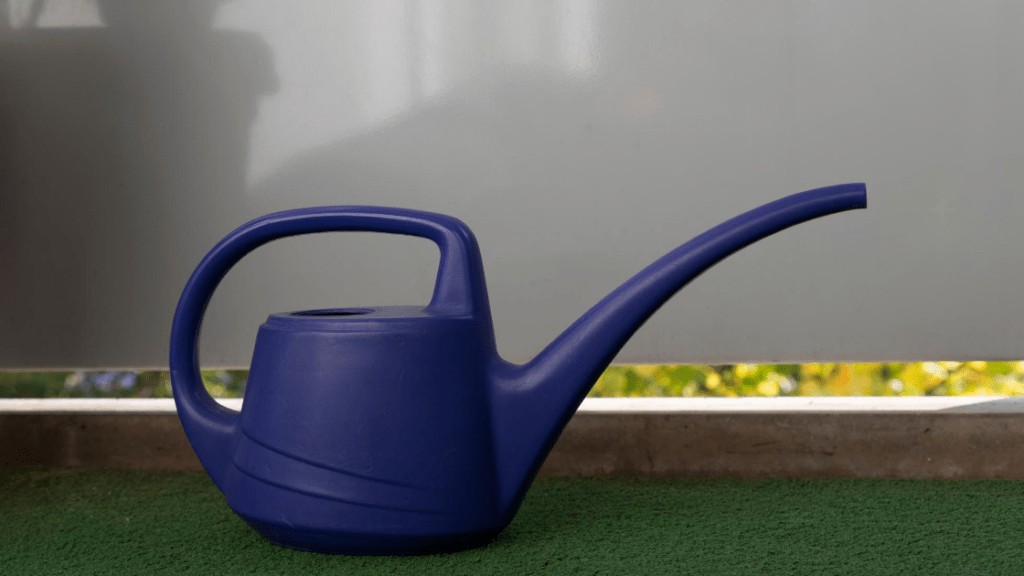
A watering can is a portable container. It has a handle and a funnel. It is used to water plants by hand.
Plastic watering cans are lightweight. However, its lifespan is not as long as metal cans. Plastic watering cans are less expensive but not very durable. They can also contaminate your water which is something to consider if you are watering edibles.
Metal watering cans last longer if they are galvanized. They also resist rust. They are a bit heavier to haul but they are very durable. You can trust your watering can to be around for the life of your garden.
A small watering can is ideal for light-duty work, like watering under the leaves of African violets. If you have a big watering job in your garden or greenhouse, choose a watering can that you can lift comfortably and keeps you from having to make frequent trips to your water source.
A watering can with a longer neck helps you to get under leaves. Longer necks are also useful for hanging baskets and locations which are hard to reach. A watering can with a shorter neck is sufficient for most overhead watering and offer stability without much dribbling.
You also need to consider the position of the handle. Hold the can and see if it is comfortable for you to pour. There are different types of watering cans with distinctive handles. For older gardeners or children, it is ideal to use a double-handed can. They can stabilize the can effortlessly with both hands.
Wheelbarrow
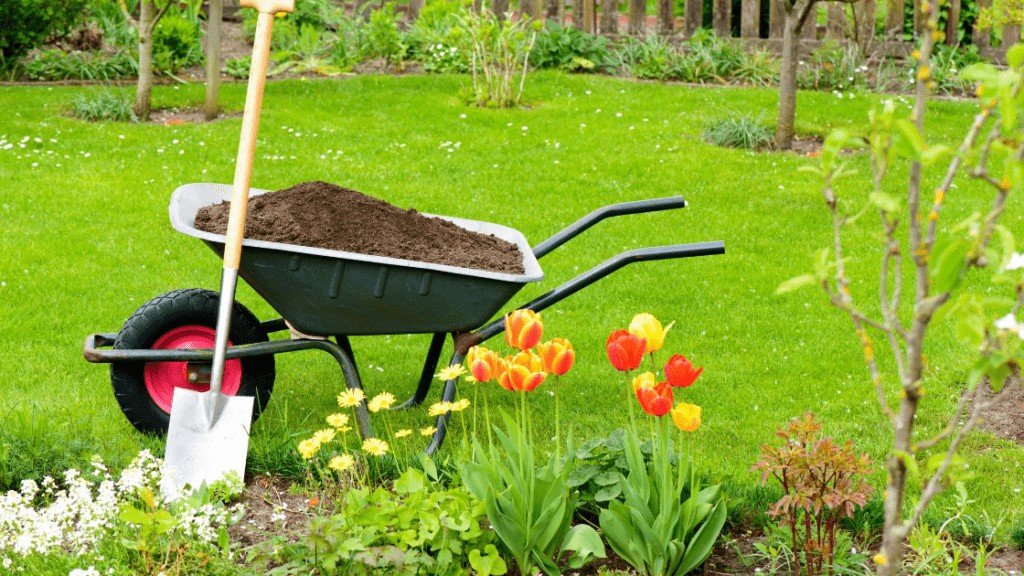
A wheelbarrow is a small cart with a single wheel at the front end and two supporting legs and two handles at the rear. You can use a wheelbarrow for carrying loads. You can also move extra soil, compost or mulch that needs to be added to garden beds, or any other heavy lifting and moving project.
It can be harder to balance heavy or evenly distributed loads with traditional dual-handle, single-wheel style wheelbarrow. Its main advantage is that it is easy to maneuver. It can easily make tight turns and maneuver into small areas. It is ideal for tasks that require working in tight places. It is best used for smaller loads.
A single-handed, two-wheeled model is easier to balance. It is also better for people with limited strength, or when pulling over uneven terrain. You can push or pull a single-handed wheelbarrow with one hand. Two-wheeled wheelbarrows will have a difficult time making sharp turns. It requires more room to be able to negotiate a turn.
Check out our wheelbarrow and carts affiliates here. Wheelbarrow and Carts Category
Maintenance for Your Wheelbarrow
For maintenance, keep wheelbarrow handles clean. Wipe them down with a cloth after every use. Clean the barrow often, giving it at least a basic clean out after every use, scraping out any remaining dirt or mulch. Give the axle a good squirt with a grease gun every couple of months. Use a bicycle pump to keep the tire inflated as needed. Store it in a clean and dry place to prevent rust.
Name Brand vs Off Brand
Name brands can cost you a little extra, but it is worth spending on it. They are more durable and stand up to any kind of abuse. They are more versatile and usually backed with a lifetime warranty. Name brands are constructed well and are designed for comfort and performance. Their specs are also quite impressive.
Gardening Sets for Adults
If you want to make a beautiful space in and around your home, gardening will require various tools and equipment. If you use the correct tools and equipment for gardening, you can efficiently plant anything in your backyard. Without a gardening set, you will find that the hobby of gardening is more difficult and time-consuming than it needs to be.
Gardening Sets for Children
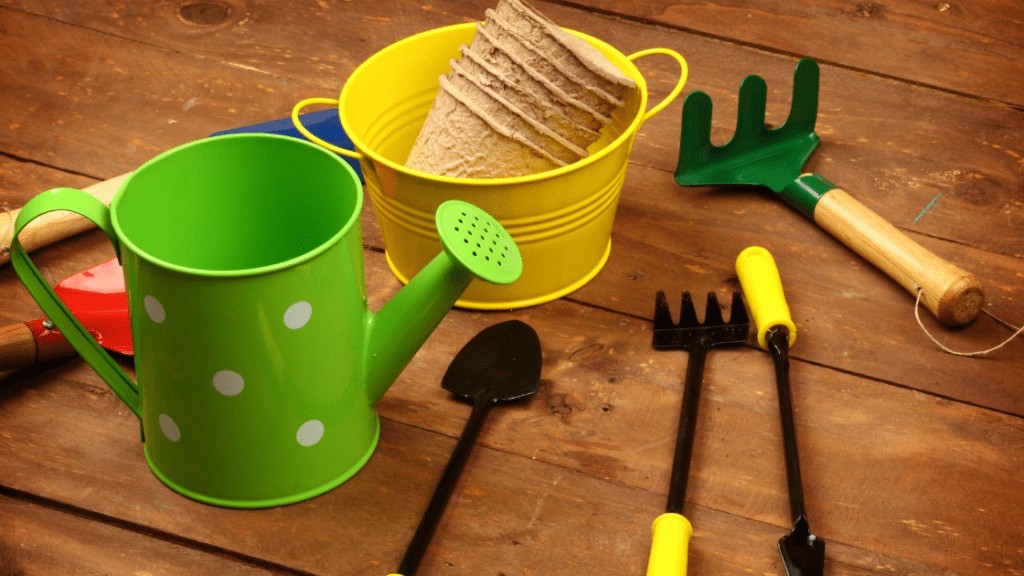
Even centuries before, playing in the garden has been a fun pastime for kids. It fascinates the little ones to dig in the dirt, plant seeds, and watch the plants bloom. Kid-friendly gardening sets are a great way to introduce nature and many other subjects. And regular outdoor play promotes great development both physically and mentally.
Conclusion
These are the essential tools you will need to get your gardening job done. If you just have a few potted plants, you will just need a few of these hand tools. But if you have planted a full garden with rows of plants, then you need to invest in most of these essential gardening tools. With these, you will have everything that will give you a beautiful and growing garden.
